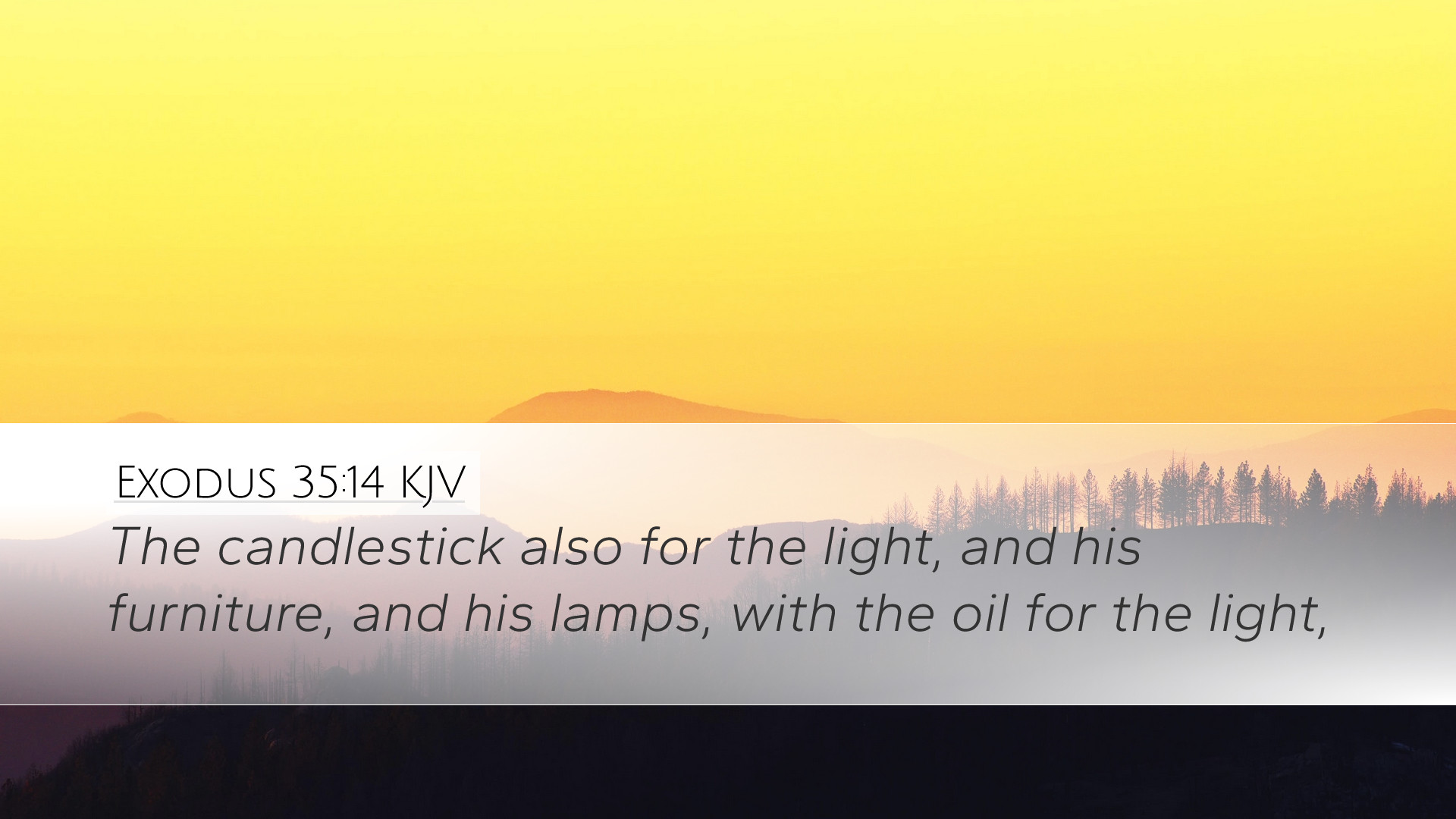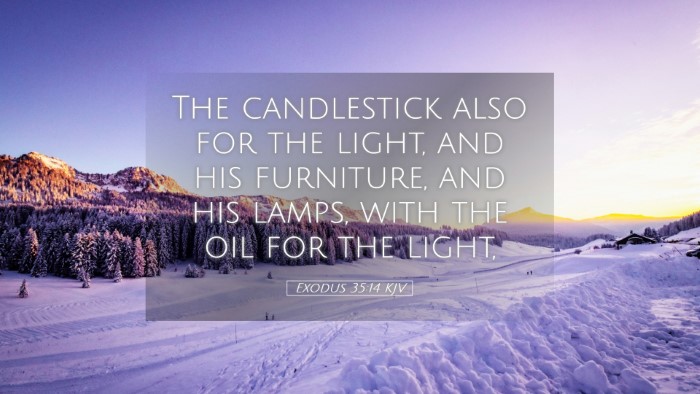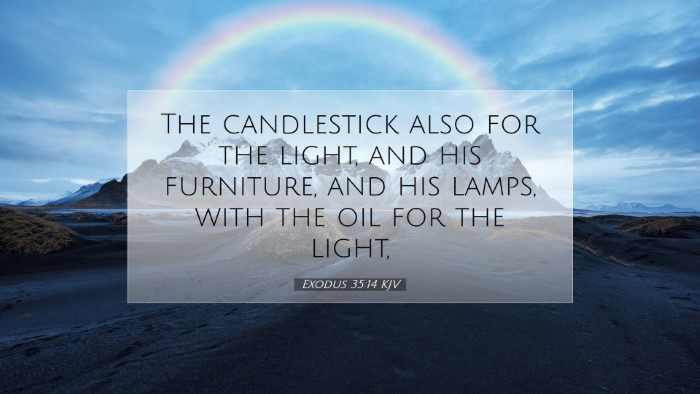Exodus 35:14 - A Commentary
Exodus 35:14 states, "The candlestick also for the light, and his furniture, and his lamps, with the oil for the light." This verse highlights the significance of the candlestick in the context of the Tabernacle, a critical element in the worship of God among the Israelites. The multifaceted symbolism and practical implications of the candlestick warrant a detailed exploration.
Contextual Background
The Book of Exodus details the Israelites' journey out of Egypt and their covenantal relationship with God, culminating in the provision of the Law and instructions for the Tabernacle. The Tabernacle served not only as a dwelling place for God among His people but also as a visible representation of His holiness and presence.
The Candlestick: Divine Instruction and Significance
The candlestick, referred to as the "Menorah," serves as a central feature in the Holy Place of the Tabernacle. It is essential to understand the divine instruction behind its design and function:
- Symbol of Divine Light: The candlestick is a symbol of God’s presence and His desire to illuminate the spiritual path of His people (Matthew Henry). The oil represents the Holy Spirit, providing the necessary light for worship.
- Perpetual Illumination: The constant lighting of the lamps signifies ongoing fellowship between God and His people. Clarke emphasizes that the continual light symbolizes Christ as the Light of the World, illuminating spiritual darkness.
- Craftsmanship and Dedication: The detailed instructions for the candlestick illustrate that God desires the best from His people. Each lamp's careful placement and the use of pure gold reflect the importance of quality and dedication in worship (Barnes).
Spiritual Lessons from the Candlestick
The candlestick offers profound spiritual lessons applicable to the life of a believer today:
- Illumination of Truth: Just as the candlestick illuminated the tabernacle, believers are called to let their light shine (Matthew 5:16). The illumination represents the truth of God’s Word and the testimony of Christ.
- Dependence on the Holy Spirit: The necessity of oil for the lamps speaks to the believer's dependence on the Holy Spirit for spiritual vitality. Clarke notes that without the oil, there can be no light; thus, spiritual illumination is contingent upon a vibrant relationship with God.
- Commitment to Continuous Worship: The maintenance of the candlestick and its lamps serves as a metaphor for the continual commitment believers must have to worship and prayer. This reflects a lifestyle centered around God’s presence, as characterized in Colossians 3:16.
The Role of the Community
Exodus 35:14 and the surrounding verses underscore the collaborative effort required in the community of believers:
- Contributions to God's Work: Each Israelite was called to contribute resources for the construction of the Tabernacle. This signifies that every member has an essential role in the community of faith and the worship of God (Barnes).
- Unity in Purpose: The collective effort in building the Tabernacle illustrates the unity required among God's people. The various contributions highlight the diverse gifts and resources each believer has to offer (Henry).
Theological Implications
From a theological perspective, the candlestick serves as a precursor to understanding the nature of Christ and the Church:
- Representation of Christ: The candlestick can be seen as typological of Christ, who brings light and life to humanity. John 1:4-5 speaks directly to this, where Christ is both the Light and Life, dispelling darkness.
- Reflection of the Church: The Church is called to be the light of the world, reflecting the teachings and nature of Christ. The candlestick also signifies the role of the Church in the world as a beacon of hope and guidance (Clarke).
Conclusion
Exodus 35:14 contains insights that deepen our understanding of God's desire for His people. The candlestick, its function, and its significance within the Tabernacle offer not only historical context but also rich spiritual implications. For pastors, students, theologians, and scholars, this verse serves as a reminder of the light God provides through His Spirit and the call to reflect that light in our lives and communities. Embracing the lessons from the candlestick can transform our approach to worship, community, and our relationship with God.


